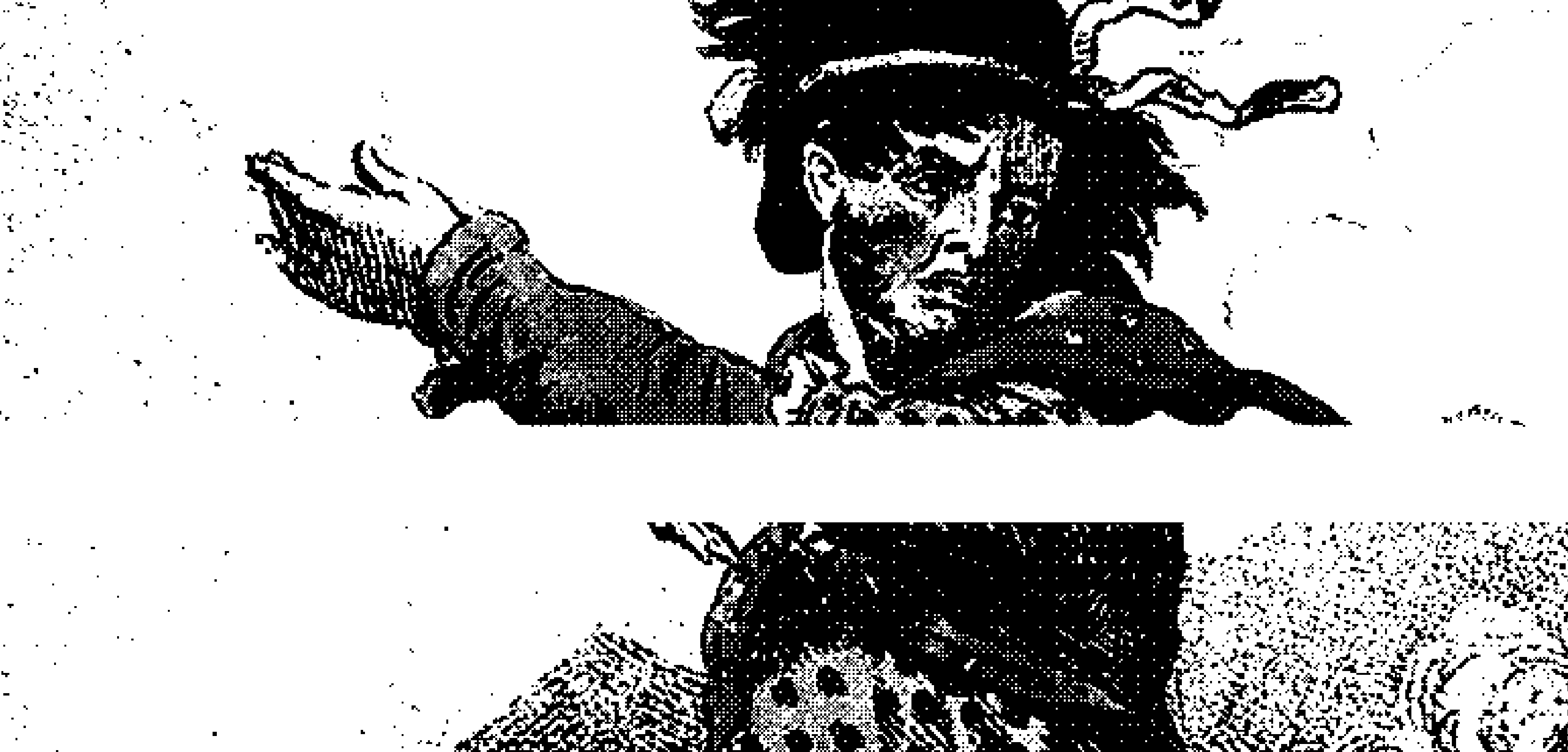Exhibit 1
MARCH OF THE MACHINES
PLAY FILM
About
Silk to Silicon
They said Ned Ludd was an idiot boy. That all he could do was wreck & destroy. He turned to his workmates and said: Death to Machines! They tread on our futures and they stamp on our dreams.’Robert Calvert
1779. The Luddites waged war against machinery as their craft was threatened by automated looms. They destroyed mechanical apparatus across England in protest against machines 'hurtful to commonality'.
Nearly 250 years later the ghost of Ned Ludd haunts us, his looms weave repeat patterns as we behold the 4th industrial revolution. Are we to witness a luddite revivalism?
Silk To Silicon is the debut solo show of artist Sebastian Koseda, spotlighting tensions between automation, ethics and environmental responsibility throughout English history and into tomorrow.
This website accompanies the physical Silk to Silicon exhibition, on display at BACKLIT Gallery, Nottingham, 2022. The following pages showcase key exhibited works and feature newly commissioned essays by Alan Willey and Maya Gulieva and a visual essay by Armando De Cosmos.
Today, exponential acceleration threatens jobs, crafts and livelihoods whilst simultaneously defining new realities. Be futureproof or be futureless.
Supported using public fundings by Arts Council England.

Foreword
Silk to Silicon
The future has come sooner than expected and it didn’t wait around for us.
In the next 10 years we are likely to see more change in automated technology than the last 100 years combined.
The Silk to Silicon exhibition is a flag in the ground on this exponential mountain of technological progress. It is a chance to stop, look around and ask - what has actually happened here? Is this exciting? Is this scary? Is this sustainable?
The following pages document a thread of enquiry based on the last two years of thinking, writing and designing around technology. I've seen entire teams of graphic design jobs wiped out to automation. I've also visited a kebab shop in Manor House and watched a robot cut the donor meat. Automation is ubiquitous, but for how long will workers and machines continue to co-exist in peace?
The Silk to Silicon journey has led me to meet extraordinary people and visit unexpected places, from a robot graveyard in Luton to the clifftop grounds of Nottingham Castle, during a time in which the world felt like it was both slowing down and rapidly speeding up.
The title of the exhibition references the pioneering time period in question, from the introduction of Joseph Marie Jacquard’s automatic silk weaving looms (1801) through to the rise of IBM computer punchcards (1931) and the development of the silicon chip (1959) - setting the stage for the crypto-mining, drone-delivering, data-harvesting, all consuming, digital world we occupy today.
In this body of work, I have explored moving image, woven textiles and graphic design as tools to interrogate themes of automation, resistance and revolution throughout English history and into tomorrow.
What is the opposite of a digital native? A digital immigrant? A digital alien? A Luddite?
In 1811, the Luddites waged war against machinery, their craft threatened by automated looms; mechanical apparatus across England were destroyed in protest against machines ‘hurtful to commonality.’ The Luddites’ revolution is a tale of fiction and fact, both absurd and insightful in equal measure. 200 years later, it is acutely relevant.
Ned Ludd, the leader of the charge, may or may not have been a fictional character but he was certainly as real as the invisible forces he contended with. Ludd summoned workers to reject oppression and to challenge their fates. An attitude commonly mirrored in today's urban tensions.
The Luddites were, of course, unaware that they were witnessing the genesis of the digital revolution. They were, however, very aware of both the productive and destructive properties of technology.
‘Enoch Taylor makes them and Enoch Taylor breaks them’, the Luddites famously cried as they used Enoch Taylor’s Hammers to destroy Enoch Taylor’s Looms. Today these instruments of industrial sabotage are swapped out for viruses, cyberworms and malware. A protest against technology manifesting in technological form.
The Neo-Luddites of the tabloid comment sections are furious –
‘Bloody robots, coming over here taking our jobs’
‘Automation needs to be taxed. These robots need to pay us back.’
Like the tension the loom gives to the weft, the future of automation is a pull of two questions: will we resist or will we accept that machines are better at driving our cars, making our food, building our houses, treating our bodies and creating our art?
Exhibit 2
A ROBOT DRAWS A SELF PORTRAIT
PLAY FILM
Exhibit 3
Punch Cards: From Silk to Silicon
Schematics from 1801 to 1990
Punchcards have been instrumental in the creation our digital world, revolutionising how we process information and perform tasks.
The birth of the punchcard was also the birth of automation and it’s timeline can be immediately paralleled with tensions caused in the work environment throughout the last 250 years, leading to redundancies, resistance and revolutions in the socio-economic landscape.
The timeline of Silk to Silicon follows the story of the punchcard, from automated silk weaving to its role in the creation of the worlds first computer, eventually informing modern binary code.
The following page illustrates these pioneering punchcards from the introduction of Joseph Marie Jacquard’s automatic silk weaving looms through to the rise of IBM computer punchcards and the development of the silicon chip.

Essay 1
Programming Lace
Maya Gulieva
Essay 2
0s & 1s
Armando De Cosmos
Essay 3
The Digital Thread
Alan Willey
Colophon
Sound design
James Rogers
Jake Horgan
Weaving support
Sally Holditch
Laser cutting & fabrication
Sam Wibberley
3D & animation support
Will Fairbrother
KitMapper Team
Dave Charlesworth
Al Leeming
Benjamin Redgrove
Ashley Zhang
BACKLIT Gallery
Matthew Chesney
Suzanne Golden
Publication Contributors
Alan Willey
Armando De Cosmos
Maya Gulieva
Website Design
Sebastian Koseda
& Max Ryan
Website Development
Max Ryan